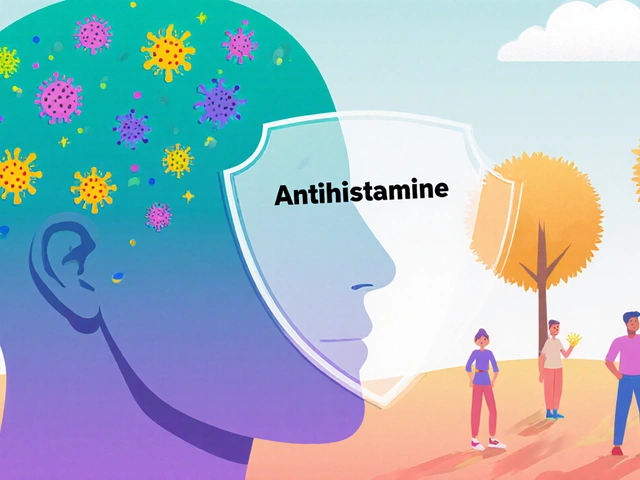Buy Atorvastatin Online: Safe, Simple, and Trusted Tips for 2025
July 5 2025NSAID Alternatives – Safer Ways to Manage Pain and Inflammation
When you’re searching for NSAID alternatives, options that relieve pain or swelling without the stomach, kidney, or heart risks linked to traditional non‑steroidal anti‑inflammatory drugs. Also known as non‑NSAID pain relievers, they span several categories. One key player is acetaminophen, a widely used analgesic and antipyretic that works mainly in the brain. Another group is topical analgesics, creams or patches that deliver pain‑relieving agents directly to the skin. Finally, natural anti‑inflammatory supplements, herbs and extracts like curcumin, ginger or omega‑3 fish oil that modulate inflammatory pathways provide a plant‑based route. Together, these options give you a toolbox that NSAID alternatives can fit into for everyday aches.
Why Look Beyond Traditional NSAIDs?
NSAIDs block cyclooxygenase (COX) enzymes to cut prostaglandin production, which reduces pain but also guards your stomach lining and kidney function. When you swap in acetaminophen, the focus shifts to the central nervous system, so you avoid many gastrointestinal side effects. Topical analgesics bypass the bloodstream entirely, delivering lidocaine, menthol or capsaicin right where you need it while leaving organs untouched. Natural supplements work upstream by gently tuning COX‑2 activity or dampening inflammatory cytokines, offering a milder but steady effect. Knowing each pathway helps you match a remedy to the situation—whether you need quick relief after a workout or a long‑term strategy for chronic joint discomfort.
Choosing the right alternative often hinges on the condition you’re treating. For mild headaches or fever, acetaminophen usually tops the list because it’s fast‑acting and easy on the gut. If you have localized tendon pain, a menthol‑based gel or a diclofenac patch can numb the area without raising blood pressure. Patients with arthritis who prefer a natural route might add turmeric capsules, aiming for a modest reduction in swelling over weeks. Each of these choices illustrates how NSAID alternatives encompass both pharmacologic and non‑pharmacologic strategies, giving you flexibility when standard NSAIDs aren’t suitable.
Safety considerations differ, too. Acetaminophen carries a liver toxicity risk if you exceed 4 g per day or combine it with alcohol, so it’s essential to track all sources, including combination cold medicines. Topical products can cause skin irritation or allergic reactions, especially if you have sensitive skin—testing a small patch first can prevent a bigger issue. Natural supplements aren’t automatically risk‑free; high doses of omega‑3 can thin blood, and some herb extracts may interact with blood thinners. Understanding these nuances ensures you replace NSAIDs with a solution that truly fits your health profile.
Cost and accessibility also play roles. Generic acetaminophen is inexpensive and widely available at grocery stores, making it a go‑to for everyday aches. Topical gels vary—some are covered by insurance if prescribed, while over‑the‑counter versions are affordable for short‑term use. Natural supplements can be pricier, especially high‑purity curcumin formulations, but many people find the long‑term health benefits worth the investment. By weighing price against effectiveness and safety, you can craft a personalized pain‑relief plan without breaking the bank.
Insurance coverage often nudges decisions, too. Prescription‑strength acetaminophen (e.g., Tylenol Combination) may be reimbursed, while many natural supplements fall under “out‑of‑pocket” expenses. Some health plans now offer discounts on topical pain patches for chronic conditions, reflecting growing clinical support for these alternatives. Checking your policy can reveal hidden savings and guide you toward the most cost‑effective option.
When it comes to long‑term use, rotating among different alternatives can minimize tolerance and side‑effect buildup. For instance, a patient might take acetaminophen for daily headache control, apply a menthol cream after intense workouts, and supplement with omega‑3 on weekends. This rotation leverages the strengths of each category while keeping any single pathway from being overstressed. It’s a practical embodiment of the idea that NSAID alternatives require strategic selection and occasional alternation to stay effective.
Finally, always involve a healthcare professional when you start a new regimen, especially if you have chronic conditions, are pregnant, or take other medications. A doctor can help you determine safe dosages, spot potential drug‑herb interactions, and suggest the best sequence of alternatives for your specific pain pattern. Their guidance turns a collection of options into a coherent, safe plan.
Below you’ll find a curated set of articles that dive deeper into each of these alternatives. From step‑by‑step guides on using topical analgesics to evidence‑based reviews of natural anti‑inflammatory supplements, the list offers practical tips, dosage advice, and red‑flag warnings to help you pick the right NSAID alternative for your needs.
 16 Oct
16 Oct
Cobix (Celecoxib) vs Other NSAIDs: Detailed Comparison
A practical guide comparing Cobix (celecoxib) with common NSAID alternatives, covering effectiveness, safety, cost, and how to choose the right option.
Read More...




